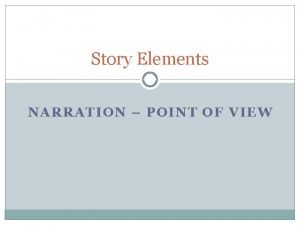Primary Sources Primary sources are often firstperson accounts





- Slides: 5

Primary Sources Primary sources are often first-person accounts by someone who actually saw or lived through an event. For example, if you see a fire or live through a great storm and then write your experiences, you are creating a primary source. Diaries, journals, photographs, official documents (such as the US Constitution), and eyewitness reports are examples of primary sources. . They give us first hand, you-are-there insights into the past. They are also the most important tools an historian has for developing an understanding of an event. Primary sources serve as the evidence an historian uses You will be using primary sources not only to help you better understand what went on, but also as evidence as you answer questions and develop arguments about the past.

Secondary sources • Secondary sources are second hand accounts. For instance, if your friend experiences the fire or storm and tells you about it, or you read about it in the newspaper or on the internet, , and then, you write about it, you are creating a secondary source. Secondary sources are often accounts that are put together, or a combination of many different primary sources. • Textbooks, biographies, and histories • Ways to use secondary sources • As a collection of facts • As a source of background material • As an interpretation • It is necessary for the historian to give them some shape and to put them in an order people can understand. This is called an interpretation. Many secondary sources provide not only information, but a way of making sense of that information.

Era An era is the period identified by some special feature by historians. For example, the Texas Revolution Absolute chronology is the exact date. Relative chronology is a period in time in relation to another event. .

Absolute 1833 - Mexican govt. rejects Texas Constitution October 1835 - Battle of Gonzales; marks the beginning of the revolution March 1836 - Texas Declaration of Independence was signed April 1836 - Texas won the battle of San Jacinto December 1845 - Texas became 28 th state of United States

Relative Texas Revolution 1830 - 1848 Industrial Revolution 1878 -1898 Great Depression 1929 -1941









